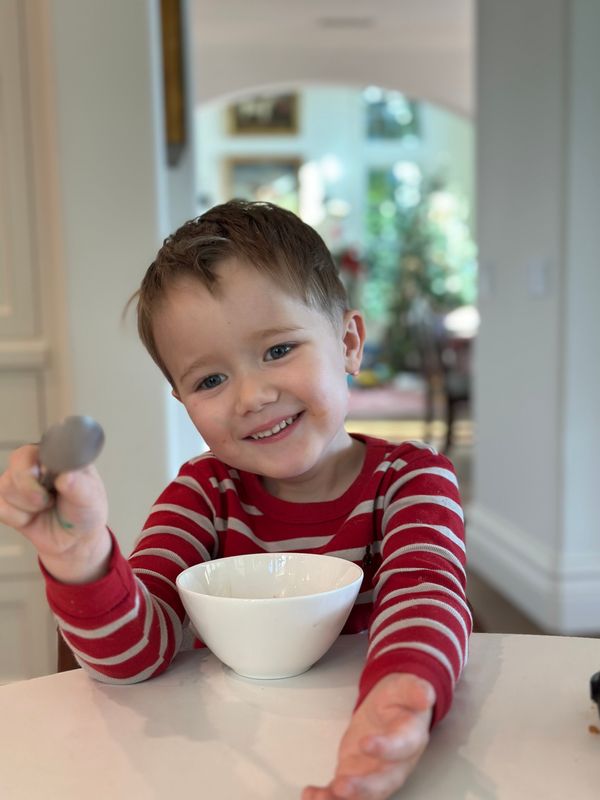
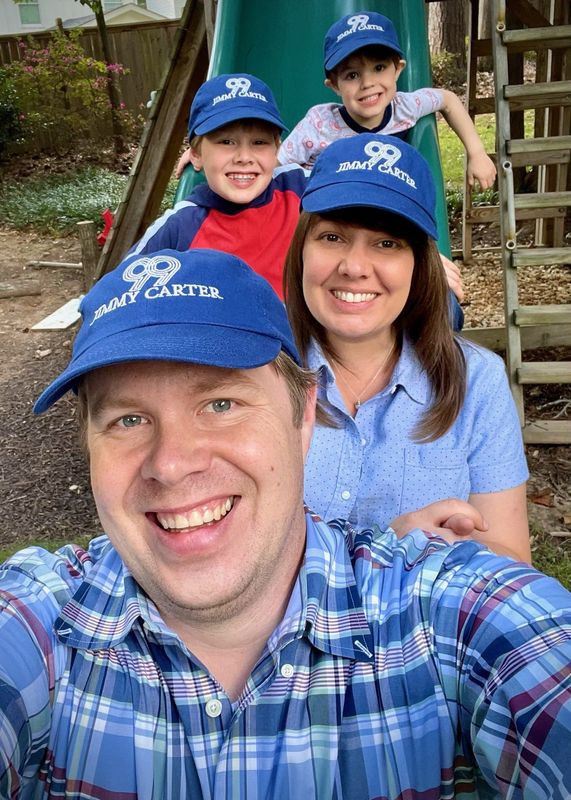
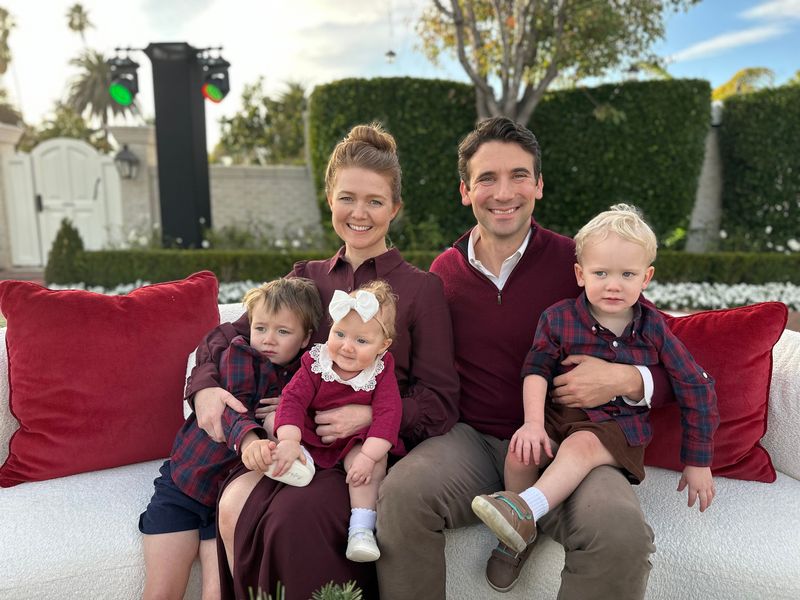
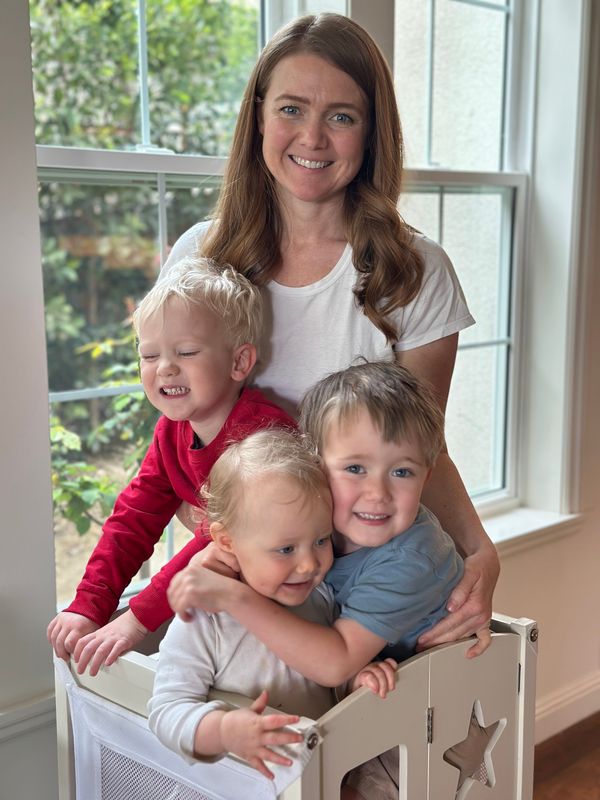
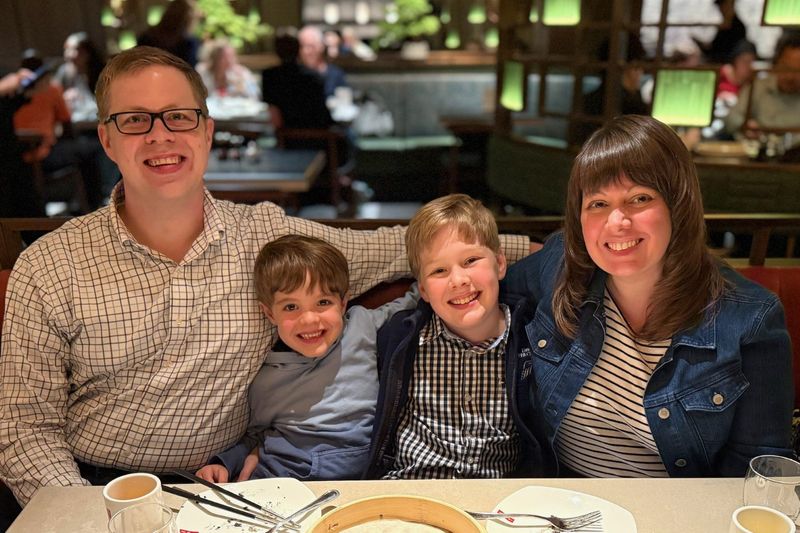
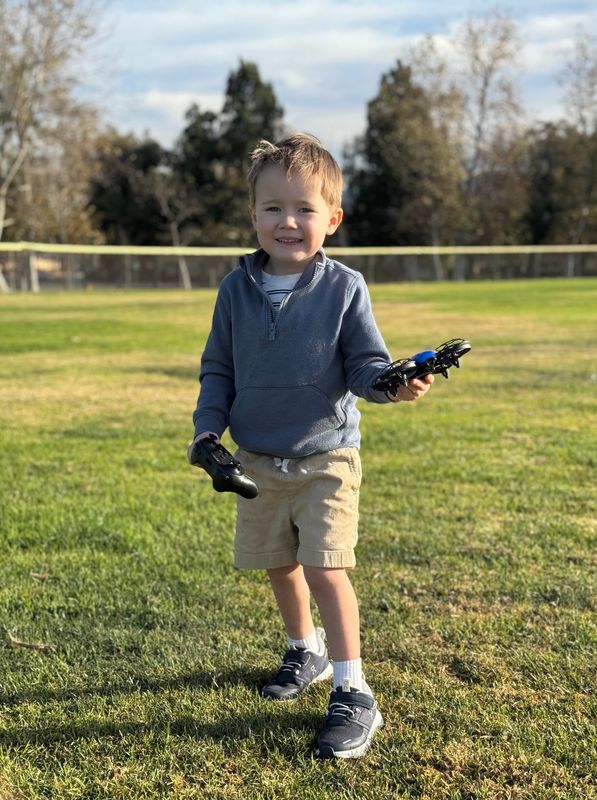
Catherine Illingworth, 39, knew something was wrong the moment her son's neurologist walked into the room.
Illingworth requested the referral from her son's pediatrician based on instinct. George took a while to start walking, she said. Once he started, he never seemed stable. At 4 years old, George fell often and couldn't keep up with friends his age.
His diagnosis was a gut punch: Charcot-Marie-Tooth disease type 4C, a rare genetic neuropathy associated with early-onset scoliosis. As the condition progresses, George could develop other symptoms like cataracts, deafness, bone or joint abnormalities, cognitive issues and respiratory problems.
The doctor offered a ray of hope and told Illingworth that a treatment for her son's rare disease had likely already been invented. The catch? It was stuck in "the research valley of death." Illingworth found the neurologist's prediction was true. Her son's treatment was just a few clinical trials − and $6 million − out of reach.
Illingworth's situation is all too common. More than 7,000 rare diseases impact more than 30 million people in the United States, according to the FDA. Half of those patients are children. Most of those conditions do not have treatments, and many of the therapies that are invented to treat rare diseases never gain the capital to make it to market, leaving parents with few places to turn.
Two months after George's diagnosis, Illingworth took a deep breath, opened the TikTok app on her phone, and started fundraising.
1 in 10 Americans have a rare disease. For most, treatment is millions of dollars out of reach.
For parents of children with rare diseases, advocacy can be a full-time job, and the results are life or death.
Josh Carter, grandson of former President Jimmy Carter, is one of those parents. His youngest son was diagnosed with Very Early Onset Inflammatory Bowel Disease when he was seven months old.
“Even though we had a diagnosis, that did not get us that much closer to having a treatment,” Carter told USA TODAY. The journey to finding the right medication for his son was “unbelievably taxing,” “devastating at times” and “all-consuming.”
That's where patient families come in, organizing bake sales and 5K races in an attempt to raise the millions of dollars needed to push new drugs through clinical trials. More parents take Illingworth's approach and post to social media to raise money, too. But those efforts aren't enough.
Cheryl Herbert, vice president of marketing and communications at the National Organization for Rare Disorders, has a teenage daughter with a rare disease. The most effective social media campaign for her daughter's treatment raised about $8,000, she said. That's a drop in the bucket for a clinical trial that will cost at least $3 million.
What these families really need, Herbert said, is buy-in from corporate America and public-private partnerships.
Illingworth knows her son's chances at a cure are better than most, because of her resources. Illingworth's husband works full time and can support their family − including child care − while she does advocacy work without pay. Her network of private school colleagues and high net-worth families has led to large donations. "The financial inequity of this is appalling," Illingworth said.
"To imagine a mom who has a kid with a terminal diagnosis, who has maybe a couple of years left with her child, and knows that there’s a treatment available, and then on the weekends she’s, like, putting on bake sales to try to earn $300 against $7 million?" Illingworth said. "That is so barbaric.”
The road to finding a cure: 'It took over our life.'
Many parents of children with rare diseases don't even make it to the fundraising stage.
It takes, on average, more than six years and 17 providers for rare disease patients to get an accurate diagnosis, according to an EveryLife Foundation for Rare Diseases study, and an estimated 30% of children with rare diseases die before their fifth birthday.
The emotional toll and pressure on these parents is enormous, said Kara Kushnir, a mental health therapist in New Jersey who serves families of children with disabilities.
“It really sets them up to live from a place of parenting where it’s a job rather than a joy," Kushnir said.
Once a family has a diagnosis there's usually some relief, said Annie Kennedy, chief of policy, advocacy and patient engagement at EveryLife. That's when conversations with doctors can turn toward solutions.
Carter said his son's doctors took a trial-and-error approach for two years before they found a therapy that worked. The medicine costs about $300,000 per year, and his family had to fight with insurance to cover it, he said. Carter said he felt more pressure than ever to keep his job for that health insurance, and his wife was working around the clock to care for their son and advocate for his care.
"It took over our life," Carter said.
But thankfully, his son has been in remission ever since. The Carters have a foundation that helps guide other families of children with Very Early Onset Inflammatory Bowel Disease through similar journeys.
For rare diseases without known treatments, the road to treatment can be much longer. The National Organization for Rare Disorders has more than 300 patient organizations, many started by parents, where patients and their families come together to discuss the same rare disease and work toward a cure. That often starts with finding academic researchers who can perform a natural history study, said Tracey Sikora, the organization's vice president of research and clinical programs. From there, researchers need to find models − often mice or cells − to test different therapies that either cure the disease or reduce its effects.
Once a likely cure is found, those trials are eventually tested with humans. But that process can take decades, Sikora said, and almost always require buy-in from a biotech or pharmaceutical company and/or congressional funding. It's near impossible, she said, for families fundraising on their own to support a multi-stage clinical trial.
“It’s very hard to make a business model surrounding a treatment that can only ever be sold to 12, 50, even 1,000 people because they’re so expensive to develop," Illingworth said.
Caring for a child with a rare disease often requires frequent travel to specialized doctors, high-cost medications and medical equipment, nutrition supplements, extra child care costs and time off work. Health insurance issues are common, too, Kennedy said. Many families set up fundraisers for those daily costs in addition to raising money for drug development.
While crowdfunding through TikTok likely won't support a clinical trial, Sikora said, those videos do spread awareness and help bring the rare diseases community together.
Still, trying to fund clinical trials in silos isn't the answer, Herbert said.
"We're not fighting against one another," Kennedy said. “We are all one community.”
Illingworth raised more than $180,000 this summer, and hopes to raise another $200,000 by Labor Day, which will cover the first lump sum to start manufacturing the drug her son needs. Then, she said, she’ll have six months to raise another $500,000. The multi-phase clinical trial will cost even more.
"At that rate, $6 million is a really long time away," she said.
If all goes according to plan, Illingworth said George will get the gene therapy when he’s 8 years old.
But even then, her work won't be done. She's met too many families on TikTok struggling alongside her. Illingworth said her heart is now in advocacy.
"There's just no universe where I raise the money for my own child and then turn around and wish all of you good luck," Illingworth said through tears in a recent social media post.
"I think that there is power in our group."
Madeline Mitchell's role covering women and the caregiving economy at USA TODAY is supported by a partnership with Pivotal and Journalism Funding Partners. Funders do not provide editorial input.
Reach Madeline at memitchell@usatoday.com and @maddiemitch_ on X.
This article originally appeared on USA TODAY: Her 5-year-old has a severe, rare disease. There's a cure, but she can't get it.
Reporting by Madeline Mitchell, USA TODAY / USA TODAY
USA TODAY Network via Reuters Connect

 USA TODAY National
USA TODAY National
 America News
America News Raw Story
Raw Story AlterNet
AlterNet CBS News
CBS News Associated Press US and World News Video
Associated Press US and World News Video Reuters US Domestic
Reuters US Domestic